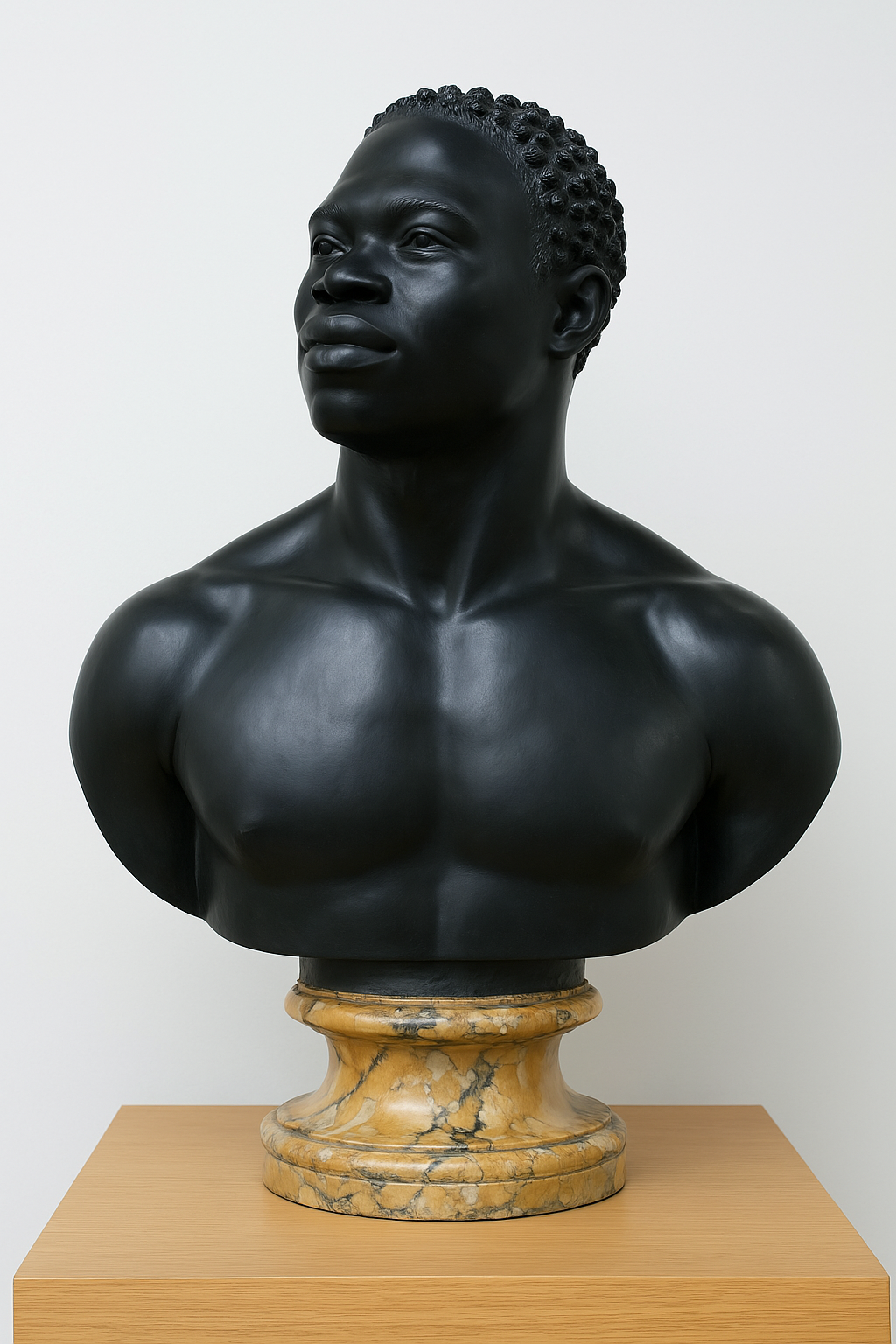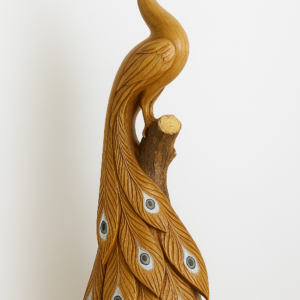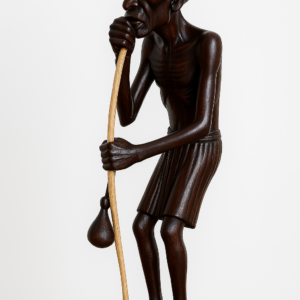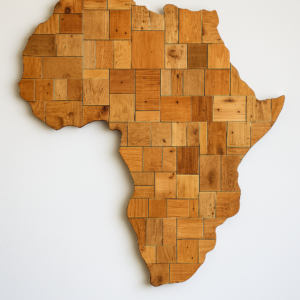“Mfalme wa Mwanga,” translated from Swahili as “King of Light,” is a monumental and deeply emotive bronze bust that captures the strength, nobility, and timeless beauty of the African male form. Carved with astonishing precision and cast in deep black patinated bronze, this sculpture stands as a powerful visual homage to African royalty, resilience, and cultural pride. The bust rests on a polished ochre-hued marble base, providing a regal contrast that amplifies its stately presence.
This masterpiece channels classical form through an African lens. The artist has clearly drawn inspiration from neoclassical European sculpture techniques, yet intentionally reclaims the narrative by centering an African subject—one rendered not as an “other” but as a sovereign force in his own right. The subject’s posture is upright and unwavering. His chest is broad, shoulders firm, and chin slightly lifted, evoking a sense of dignified contemplation. The gaze, directed subtly upward and to the side, is not just a physical posture—it is a metaphor for vision, wisdom, and forward movement.
Every detail of this bust is executed with devotion to anatomical accuracy and symbolic expression. The musculature is carefully rendered—neither exaggerated nor diminished—highlighting physical power while preserving the elegance of the human form. The face is calm, strong, and emotive. High cheekbones, full lips, and delicately detailed eyebrows and nostrils reveal an artisan’s steady hand. The hairstyle, intricately carved in tight coiled curls, suggests a cultural reverence for grooming, identity, and heritage—elements central to many African societies.
The material choice enhances the symbolic significance. Bronze, long considered a medium of eternal legacy, reinforces the work’s ambition to immortalize its subject. The deep patina speaks of shadow and light, echoing a history marked by struggle and triumph. Meanwhile, the marble base, marbled with veins of golden honey, recalls the Earth’s richness and the spiritual grounding of African tradition.
What sets Mfalme wa Mwanga apart is its ability to exist between worlds: ancient and modern, African and universal, personal and political. In a single figure, the sculpture tells the story of generations—kings and warriors, farmers and freedom fighters, ancestors and youth. It is not just a likeness of a man; it is an embodiment of collective memory and unbreakable identity.
The bust was likely inspired by traditional Yoruba and Benin royal portraiture, where commemorative heads were sculpted to honor departed rulers. Yet, it clearly moves beyond homage to become a declaration of ongoing presence and vitality. This is a work that refuses invisibility. It demands to be seen, to be revered, and to be remembered.
This sculpture is ideal for prominent placement—either as a standalone centerpiece or as part of a larger curated collection of African or diasporic art. Whether displayed in a luxury home, academic institution, gallery, or museum, Mfalme wa Mwanga will dominate its space not with loudness but with gravitas. Its silence is its power.
Collectors, curators, designers, and historians alike will appreciate the fusion of classical mastery with African soul. This bust is not simply decoration; it is a cultural archive in form. It invites dialogue, contemplation, and admiration. It challenges narratives, centers Black excellence, and elevates heritage.
In a world eager for authenticity and voice, this sculpture delivers both. Mfalme wa Mwanga is not an object. It is a sovereign declaration—bold, beautiful, and unforgettable.





Reviews
There are no reviews yet.